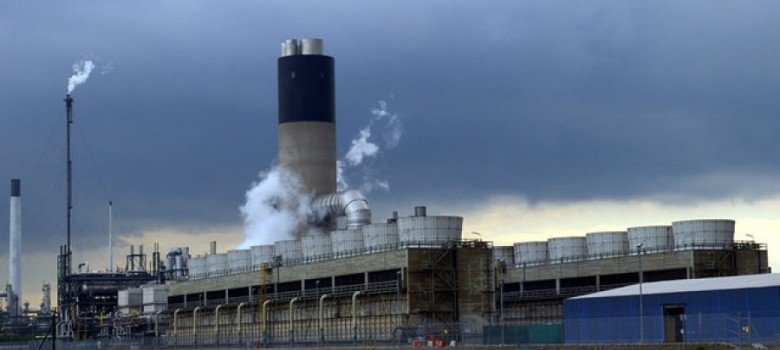
Background to the Immingham CHP Power Plant
Combined heat and power technology works well with many existing industrial processes and Immingham CHP plant in the North East of England is no exception. Situated on the North East coast of England, the ConocoPhillips Refinery is one of the largest CHP plants in Europe and together with the refineries that underpin it, employs a large number of people in Grimsby, Hull and Lincoln.
The ideas and blueprint for the project began in 1998 as ConocoPhilips sought to upgrade the energy supply for its Humber refinery, which essentially needed more steam for its refinery business. In addition, the existing boiler providing the steam was deemed to be out of date and inefficient, increasing the urgency of this project. The ideal solution was to upgrade the existing technology so that both efficiency was increased, as well as reducing the impact on the local environment. Electricity generating capacity was also added, allowing the power plant to be connected to the grid so electricity could be exported and sold.
Prior to this, the company was relying on the grid to supply electricity as well as processes that failed to provide the quantity of steam required. With uncertainty about gas prices and the capital investment required to undertake a project of this size, Conoco Philips qualified for investment defined under the UK CHP programme and under the EU Cogen Directive, the project got the green light.
Moreover, the UK Government at the time introduced Enhanced Capital Allowances (ECA’s) and the Climate Change Levy, with Immingham CHP being included in these schemes. These measures related to capital investments and designed to encourage quality CHP. In summary they allow for accelerated depreciation for tax purposes, which means those undertaking the investment like Conoco Phillips benefit from a lower tax bill and keep hold of more cash.
Key Operational Facts – Immingham CHP Power Plant
ConocoPhilips ICHP is one of the largest industrial scale CHP plants in Europe. As part of phase 2, the power station now produces 1200MWs of electrical power and has significantly increased its district heating capabilities.
ICHP Phase 1 began operations in November 2004 and peak output is approximately 735 MW. The Phase 2 Extension is proposed to provide an additional 470 MW, bringing the total to a nominal 1210 MW. Phase 1 ICHP Plant produces electricity for the Humber Refinery and supply to the national grid. The additional capacity was expected to be provided to the national grid and to existing and new third party customers. The proposed fuels used on site were natural gas, distillate fuel oil and refinery off-gas.
Immingham Power Plant Business Partners
There are two sites, one that holds the refinery and the other that has the Immingham Combined Heat and Power (ICHP) plant. Crucially, one of the main outputs is steam, which also serves Total’s neighbouring Lindsay Refinery. Therefore ConocoPhilips definitely uses ICHP as a form of investment that will provide benefits to industry surrounding it in the local area.
Other business partners involved in the project were Foster Wheeler, who were the EPC contractors; Nooter Eriksen providing the Heat Recover Steam Generators (HRSGs) and Franco Tosi Meccanica supplying the steam turbines.
Environmental Impact Assessment of the Immingham Power Plant
An Environmental Impact Assessment (EIA) was carried out prior to the project getting the green light, to supplement the commercial business case, which was all about keeping the Humber and Lindsay refineries competitive in the European refining market.
As an upfront benefit the new ICHP plant reduced utility costs at the Humber Refinery by about 30%. From an environmental perspective it is estimated that the plant, with an overall efficiency of around 70%, will save about three million tonnes of CO2 per year compared with conventional coal fired generation plant. Another key benefit arising from the Immingham CHP is that it contributes to the energy infrastructure on the South Humber Bank which will almost certainly be required for future industrial development in the area.












Some great information there in regards to Combined Heat and Power. Thank you for sharing your insights into this CHP.
Thanks James – appreciate your comment.